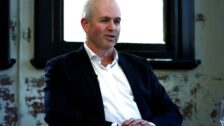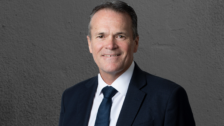The missing piece behind a dovish central bank policy
Christopher Joye and his growing team at Coolabah Capital regularly stand out among the smartest minds in the industry. Whether analyzing the topic of credit spreads in bond markets or COVID-19 infection rates, they have shown an innate ability to look beyond headline data and connect the dots with what is occurring in the real economy.
In a number of recent missives, they have been addressing the seeming disconnect between a highly bearish or ‘dovish’ Reserve Bank of Australia (RBA) and an economy that seems at risk of overheating, at least, according to many experts.
Similarly, to the discussions this week around the Federal Reserve’s dot plot chart, in a traditional world, all the economic signs point to a sustained outbreak in inflation. Whether it is the fact that headline unemployment has fallen below even pre-pandemic levels, or the fact that our economy is already larger than it was beforehand, there have been no mixed signals.
So why is the Reserve Bank persisting with ‘loose’ monetary policy and quantitative easing? Coolabah puts it down to many reasons, with underemployment and our closed borders among them.
Commenting on the Reserve Bank’s latest whitepaper ‘Underemployment in the Australia Labour Market’ Joye highlights that “underemployment in Australia has been increasing for several decades, driven by both structure and cyclical factors; in contrast, over the same period the unemployment rate has fluctuated but has broadly moved lower.”
In this case, underemployment is defined as “the share of workers in the economy who want to work, and are available to work, additional hours.” This, he says, represents additional labour supply on top of the unemployed, which is shrinking.
While unemployment recently reached 5.1%, the heads-based underemployment rate in April 2021, was 7.8%, or nearly 1.1 million people. That is 1.1 million of a total of 14 million employment, with the under-employed including some 25% of all part-time workers. This is important, according to Joye, because it potentially explains the breakdown in the relationship between unemployment and wages growth, which remains non-existent.
In fact, the RBA has found that the “underemployment rate is a better predictor of wages growth” and that as a result it “may have to fall further than it has historically before Australia experiences strong and sustainable wages growth.” Why? There are many potential reasons, including the fact that the underemployed don’t tend to demand higher wages, preferring more flexibility with work.
The second, and potentially more powerful trend, was raised by Joye’s colleague Kieran Davies, and relates to the likelihood of Australian’s achieving “sustainable”wages growth of 3% to 4%. According to Joye, “we are almost certain to have a huge influx of new labour supply (skilled migration, students and tourists” when we begin reopening our borders.
Many would assume these workers are caught-up in our unemployment rate, but according to Davies, they are not part of the core calculation. Those seeking more granular data must look at the ABS’ Labour account, which actually shows that “total employment is yet to recover to its pre-pandemic level.” This comes at the same time that job vacancies have reached all-time highs.
Again, why is this so? Put simply, Australians have been taking the jobs lost by migrant workers who returned home during the pandemic with those workers never truly included in unemployment figures. This, Davies calculates, could be over-estimating the unemployment rate by as much as 2.4 percentage points.
The RBA recently flagged concerns that businesses are choosing to hold-off on hiring new workers, preferring to wait until borders reopen rather than increase wages to attract more workers. This is likely due to many reasons: on the one hand, businesses are seeking to protect profits, on the other hand (which is likely the case in hospitality and tourism) their profit margins are likely so challenged they don’t have a choice.
According to Davies, “when foreign workers eventually return, the boost to job vacancies and the downward pressure on the unemployment rate should reverse.” Therefore, the real risk to inflationary wage growth may actually be further delays in the reopening of our borders.











